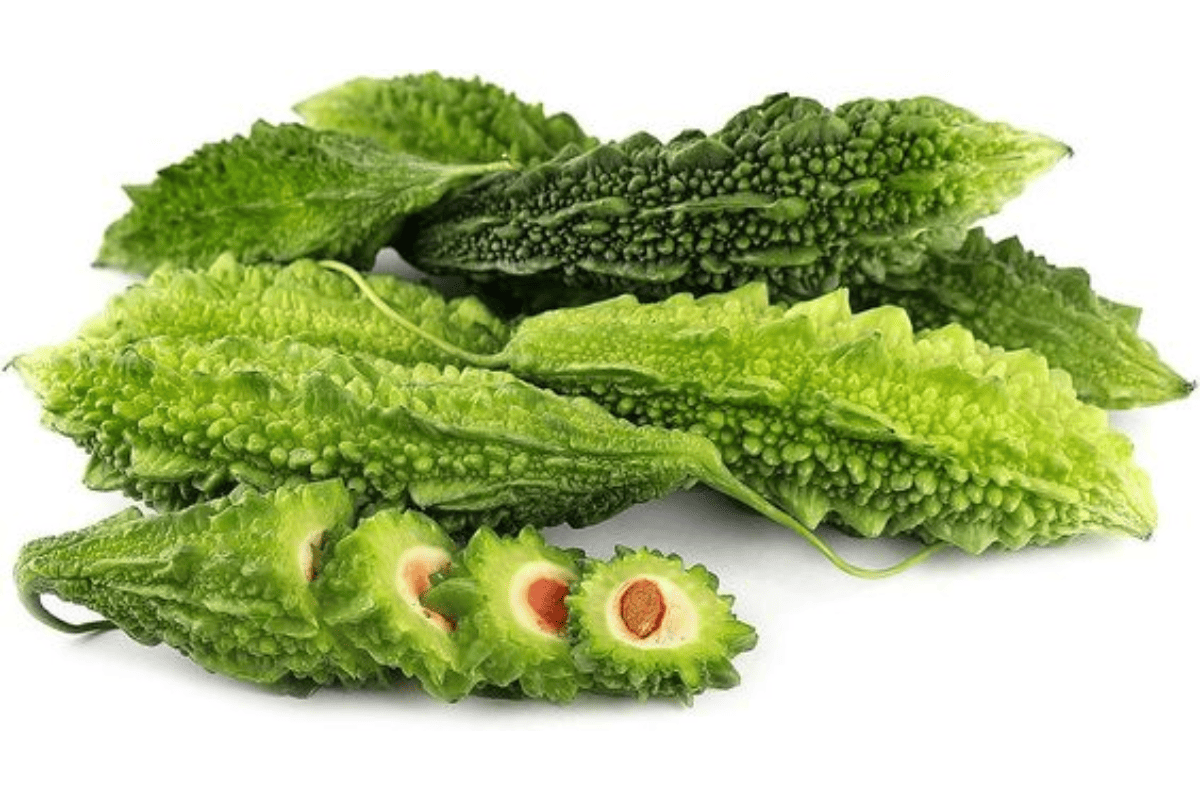Mướp đắng là một loại dây leo thuộc họ Bầu bí (Cucurbitaceae), được trồng rộng rãi ở các vùng nhiệt đới và cận nhiệt đới. Quả mướp đắng có hình dáng dài, bề mặt sần sùi, màu xanh lục hoặc vàng cam khi chín. Vị đắng đặc trưng của mướp đắng là do các hợp chất cucurbitacin.
1. Đặc điểm của mướp đắng
– Dây leo: Mướp đắng là loại cây dây leo, có thể leo giàn hoặc bò trên mặt đất.
– Lá: Lá mướp đắng có hình chân vịt, màu xanh lục, có lông tơ.
– Quả: Quả mướp đắng có hình dáng dài, bề mặt sần sùi, màu xanh lục hoặc vàng cam khi chín.
– Vị đắng: Vị đắng đặc trưng của mướp đắng là do các hợp chất cucurbitacin.
– Mùa vụ: Mướp đắng được trồng quanh năm, nhưng mùa vụ chính là từ tháng 4 đến tháng 9.
2. Thành phần hóa học
Mướp đắng chứa nhiều hợp chất có hoạt tính sinh học, bao gồm:
– Cucurbitacin: Hợp chất chính tạo nên vị đắng của mướp đắng, có tác dụng hạ đường huyết, chống ung thư, kháng viêm.
– Charantin: Hợp chất có tác dụng hạ đường huyết.
– Polypeptide-p: Hợp chất có cấu trúc và hoạt tính tương tự insulin.
– Vitamin và khoáng chất: Mướp đắng chứa nhiều vitamin A, C, E, các vitamin nhóm B, kali, magie, sắt…
– Chất xơ: Giúp cải thiện hệ tiêu hóa.
3. Công dụng của mướp đắng đối với sức khỏe
– Hạ đường huyết: Mướp đắng được sử dụng rộng rãi trong y học cổ truyền và hiện đại để điều trị bệnh tiểu đường.
– Giảm cholesterol: Mướp đắng có thể giúp giảm cholesterol xấu (LDL) và triglyceride, giảm nguy cơ mắc bệnh tim mạch.
– Hỗ trợ giảm cân: Mướp đắng có hàm lượng calo thấp và chất xơ cao, giúp tạo cảm giác no lâu, hỗ trợ quá trình giảm cân.

– Chống ung thư: Một số nghiên cứu cho thấy mướp đắng có thể giúp ức chế sự phát triển của tế bào ung thư.
– Tăng cường hệ miễn dịch: Mướp đắng chứa nhiều chất chống oxy hóa, giúp bảo vệ tế bào khỏi tổn thương, tăng cường sức đề kháng.
– Cải thiện tiêu hóa: Chất xơ trong mướp đắng giúp cải thiện hệ tiêu hóa, ngăn ngừa táo bón.
– Làm đẹp da: Mướp đắng có tác dụng thanh nhiệt, giải độc, giúp làm sáng da, giảm mụn nhọt.
4. Ứng dụng của mướp đắng
– Thực phẩm: Mướp đắng được sử dụng để chế biến nhiều món ăn như mướp đắng xào trứng, mướp đắng nhồi thịt, trà mướp đắng…
– Dược phẩm: Mướp đắng được sử dụng để sản xuất các loại thuốc hạ đường huyết, thuốc bổ gan.
– Mỹ phẩm: Mướp đắng được sử dụng trong các sản phẩm chăm sóc da như mặt nạ, kem dưỡng da.






